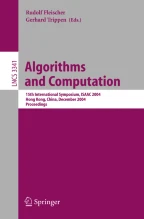
We study Pareto optimal matchings in the context of house allocation problems. We present an \(O(\sqrtm)\) algorithm, based on Gale’s Top Trading Cycles Method, for finding a maximum cardinality Pareto optimal matching, where n is the number of agents and m is the total length of the preference lists. By contrast, we show that the problem of finding a minimum cardinality Pareto optimal matching is NP-hard, though approximable within a factor of 2. We then show that there exist Pareto optimal matchings of all sizes between a minimum and maximum cardinality Pareto optimal matching. Finally, we introduce the concept of a signature, which allows us to give a characterization, checkable in linear time, of instances that admit a unique Pareto optimal matching.
This is a preview of subscription content, log in via an institution to check access.